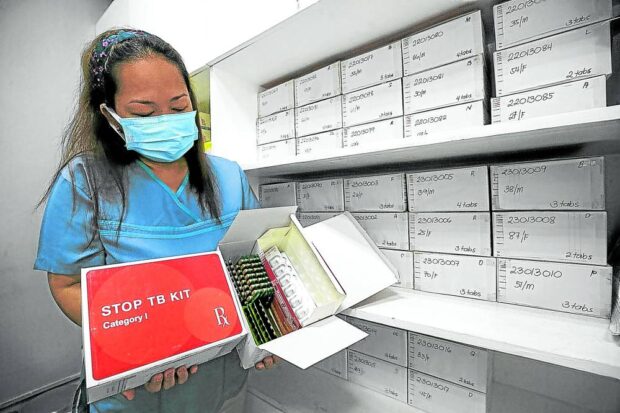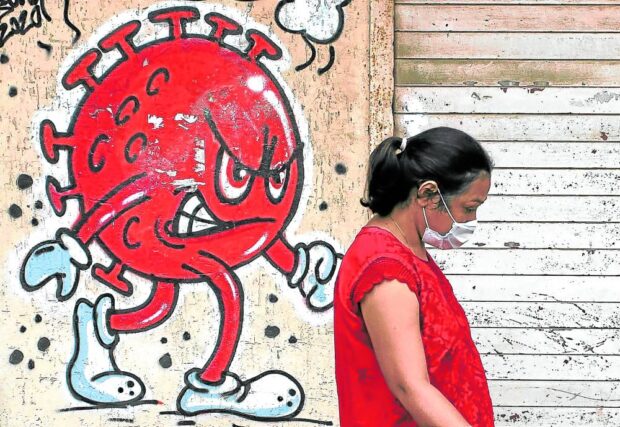DOH to expand free tuberculosis treatment services

TB MEDICATIONS | Nurse Narlene Menez shows the individual boxes of TB patients from a shelf at the new Bambang Health Center in Pasig City in this photo taken on March 23, 2023. (File photo by LYN RILLON / Philippine Daily Inquirer)
MANILA, Philippines — The Department of Health (DOH) is planning to expand free tuberculosis (TB) treatment services at the primary care level by integrating the state health insurer’s benefits package to nearly 4,000 health facilities to improve patient referral and navigation.
Marlene Galvan of the DOH’s Disease Prevention and Control Bureau said one of the government’s strategies to track down undiagnosed and untreated TB patients is by augmenting the number of primary care facilities with accredited TB-DOTS (directly observed treatment, short course) services to 3,858 by year 2040 from the current 1,758.
TB-DOTS is the recommended “cost-effective” strategy by the World Health Organization (WHO) to contain the spread of TB in high-risk communities. Under this standard treatment plan, a patient’s drug intake and condition are regularly monitored for six to eight months.
“So doubling our primary care facilities by 2040 will provide an impact to improve navigation of TB patients,” she said in an online forum on Friday.
The Philippines marks National Tuberculosis Day every Aug. 19.
Article continues after this advertisementThrough this plan, the DOH also expects the ratio of hospital beds for TB patients to increase to 2.7 for every 1,000 population from the current 1.2 for every 1,000.
Article continues after this advertisementAs the novel coronavirus cases continue to decline, noted Galvan, at least COVID-19 laboratories with GeneXpert capacities may now be utilized to detect more TB infections.
Being undernourished and living in poorly ventilated environments and crowded areas are among the risk factors for the highly contagious disease, Galvan said.
Risky behaviors

A woman walks past a coronavirus-themed graffiti, amidst the spread of the COVID-19 pandemic, on a street in Mumbai, India, Oct. 12, 2021. (REUTERS FILE PHOTO)
“The poor [people] bear the greatest burden of TB and health inequalities,” she added.
Risky behaviors that could increase the risk for TB are smoking, and alcohol use disorders, while being diagnosed with human immunodeficiency virus and diabetes are also associated with the airborne disease.
Caused by the bacteria Mycobacterium, TB can be transmitted through the air when infected individuals expel droplets through coughing or sneezing. It commonly affects the lungs, but it can also spread to other organs, such as the brain, kidneys, or the spine.
Tuberculosis control and treatment is one of President Marcos’ marching orders to Health Secretary Teodoro Herbosa when he assumed office in June.
Based on the Philippine Statistics Authority data, TB is the 10th leading cause of death among Filipinos from January to November last year. There were 119,558 confirmed TB cases in 2022, according to DOH figures.
A Global Tuberculosis Report by WHO released in October last year showed that approximately 741,000 Filipinos developed active tuberculosis disease in 2021. But only around 500,000 patients are currently on treatment.
Based on historical data from the WHO, the number of diagnosed and treated individuals with TB has been increasing since 2012, until the COVID-19 pandemic hit the Philippines in 2020 when diagnosis and treatment for the illness nearly halved to 250,000.